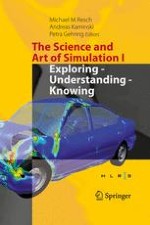2017 | OriginalPaper | Buchkapitel
The Art of Staging Simulations: Mise-en-scène, Social Impact, and Simulation Literacy
verfasst von : Bruno Gransche
Erschienen in: The Science and Art of Simulation I
Aktivieren Sie unsere intelligente Suche, um passende Fachinhalte oder Patente zu finden.
Wählen Sie Textabschnitte aus um mit Künstlicher Intelligenz passenden Patente zu finden. powered by
Markieren Sie Textabschnitte, um KI-gestützt weitere passende Inhalte zu finden. powered by
